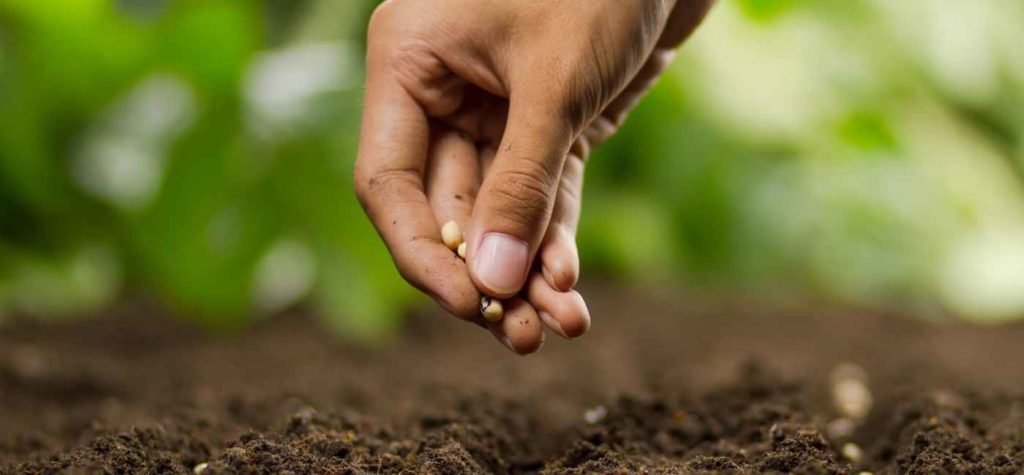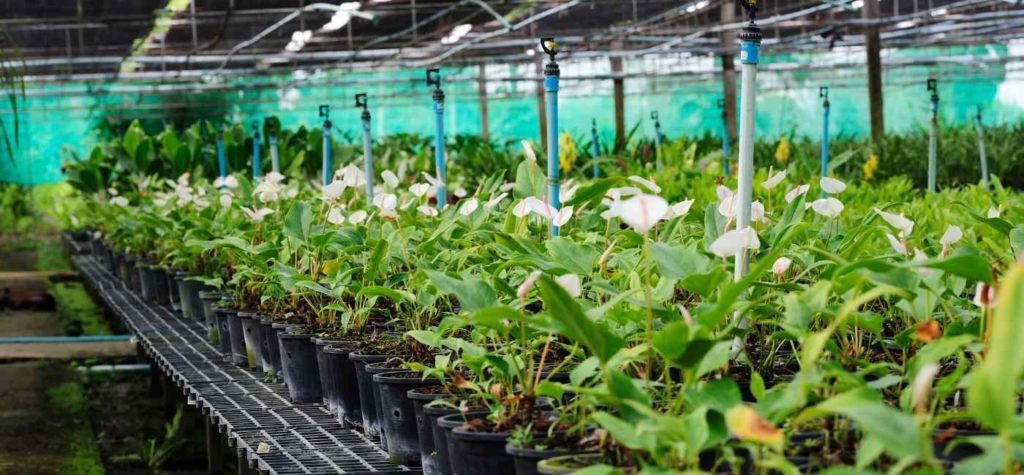
W. Wayne Surles, Ph.D
W S Associates, LLC
6009 Britlyn Court,
Glen Allen, VA 23060
July 1, 2022
Introduction
Both the available literature and personal experience present a broad array of conclusions for the use of hydrogels in seed treatment. Although both pro and con conclusions can be drawn the most comprehensive reviews support the majority opinion for positive recommendations for the use of hydrogels as seed treatments. A pragmatic condensation is provided herein.
In plant growth it is well documented that the faster that any plant can become established the more positive results will be obtained in biomass production…i.e., yield. Most of the large grain species evolved in arid areas in which the grasses had a survival need to get off to a fast start. Thus, large seeds provided the impetus for providing a healthy, fast starting new plant. As man began to practice agriculture, he realized that anything that could be undertaken to get the desired early plant off to a strong start would enhance overall production. Photosynthetic improvement, nutritional input, plant structure, reduction of pest competition and irrigation have all been improved in our continued effort to improve botanical husbandry. Today we recognize the importance of seed treatments for enhancing plant growth efficiency. Growers have numerous available methodologies to provide chemical and physical support for fast seed starting. In furrow application, seed treatment, seed coating or encapsulation all provide desirable approaches. From this lexicon of choices seed coating or encapsulation affords numerous benefits: reduction of additives; directed” prescription” application ; improved economics; seed uniformity; precision planting ; ease of application ; stand uniformity and faster “jump up” and “take off” of the plant itself. Modern precision planters demand seed uniformity with less dust, to avoid missed areas of the row crops. Seed Coating and Seed Encapsulation provide the perfect tools for modern agriculture.
Seed coating is the application of additives at the seed treatment facility or in “hopper box” treatments at the grower level. This technique is fast, easy and inexpensive but many undesired variables remain, primarily unequal distribution of treatment material and non-uniform seed size. Thus, this technique may be very practical for lawn grass seed, but unacceptable for grower precision planting of high value crops. If a grower is planting very small seeds that cost thousands of dollars per pound, he will derive immense benefits from seed encapsulation to assure precision placement. Seed encapsulation is the ultimate. Although many seed treatments can be applied as coatings in which a filler and sticker are used to enclose the seed a true seed encapsulation may have several laminations that will produce uniform seed particles. Thus, an air planter or other sophisticated planting machine can plant these encapsulated seeds precisely.
What are Superabsorbent Polymers ( SAP’s)?
SAP’s are synthetic three dimensional polymers that can absorb large quantities if water, often as much as 400X their weigh. As water retention management tools, they were first developed for use in diapers. The original SAPs were synthesized from mono amines and Na+ ions. They absorbed water but would not release it. As they evolved and agricultural/horticultural applications developed greater engineering emphasis was directed towards ecofriendly molecules that would absorb and release water over many cycles. The current leader in the plant use markets is potassium crosslinked polyacrylate, a polymer of acrylic acid and K+, which eliminates the concerns for residual monoamines and the negative plant growth effect of Na+ ions. The market leader, STOCKOSORB ® 660, has found strong adoption in agriculture as well as horticulture. Having been specifically developed for plant uses it is now deployed internationally and has specifically become the product of choice for seed treatments, and coatings. Most of the available commercial grass seed sold today is coated with potassium polyacrylate.
What are the Benefits of STOCKOSORB ® 660 For Seed Treatment?
Seeds benefit from SAPs in many fashions. We should consider:
- Cost effective water management.
- Improved seed germination.
- High rates of survival and speed of initial growth.
- Suppressed seeding stress from drying field conditions.
Since the SAP initial introduction into agriculture in the 1970’s a massive research data base has been developed. While some researchers have been non-supporters the plethora of current research affirms the water management benefits. The critical reader may well seek highest credibility via the citation of refereed scientific peer reviewed papers. In an effort to abbreviate and summarize meaningful reports five documents are cited herein. These will simply be cited in numerical sequence as they are referenced herein ( 1, 2,3, 4 and 5)
Elshafie and Camele (1) in their publication, Applications of Absorbent Polymers for Sustainable Plant Protection and Crop Yield (March 2021) in reference to hydrogels have stated…” The seed-coating technology for establishing the crops is a recent common practice used for improving seed protection and enhancing plant growth.” In their extensive review of 98 papers, they remark that hydrogels show promising results for seed-coating, Regarding Germination they cite other authors in concluding that …” coated seeds showed a higher rate of emergence than uncoated seeds….” In their Conclusions they state that “The seed coating technology is considered an interesting strategy for protecting seeds against several phytopathogens and improving plant growth.” In essence they endorse the concept of hydrogel seed coating, yet their analysis affirms the wisdom of individual research to explore each considered use.
Afzal et al (2) in 2020 provides a comprehensive review of 111 peer reviewed publications regarding all methodologies and objectives for treating seeds. The authors cite the SAPs long history for use in agriculture and that “…SAPs improved germination potential by early and rapid completion of imbibition and active metabolism phases by improving water availability around the sown seed. “They then cite publications lauding the increased germination and stand establishment.
Li-Qiang Su et al in 2017 (3) Super absorbent seed coatings promote seed germination and seedling growth of Caragana korshinskii worked with a plant native to arid environments to enhance establishments with minimal moisture. The physiology of the seed germination and physical growth is reviewed in detail and the findings of this heavily cited publication is succinctly summarized in their abstract… “After coating C. korshinskii seeds with SAPs, more seedlings emerged and grew better.”
In 2017 de Barros et al.published Super absorbent polymers application in seeds and planting furrow: it will be a new opportunity for rainfed agriculture (4) abstracted their extensive work with sorghum ( Sorghum bicolor) (32 citations). . Their research codified the inconsistency of typical seed treatment field research, yet they concluded..” Therefore, the use of SAP as a seed coat or applied in the planting groove has beneficial effects on the vegetative development of sorghum under low water conditions.”
In 2015 Dr. M. Fidanza of Pennsylvania State University (5) conducted a comprehensive series of laboratory and field trials with STOCKOSORB ®660-treated alfalfa seed. At a rate of 1.25% w/w this potassium polyacrylate SAP significantly improved seed emergence in both soil and sandy conditions.
In summarizing the benefits of SAP costed seed both personal history and literature support the following conclusions:
- A modest amount of SAP ( ca 1-2%) applied as a seed coating is cost effective, literally a few cents per pound of high value seed.
- SAP Coated seeds can be laminated as necessary to produce uniform particle size that enhances modern precision planting.
- Improved seed germination is yet to be definitively proven; however, improved seedling emergence has been extensively documented.
- Improved seedling survival and growth rates is well documented.
- Improved biomass ( ie yield) is consistent with SAP treated seed.
- Improved seedling vigor is evident.
STOCKOSORB ® 660 is the Market Leader in SAP Seed Treatment
STOCKOSORB ® 660 has been engineered to provide the desired agronomic benefits for seed treatment. Normal commercial particle sizes range from a low of 200 microns; however, current seed treatment customers are provided much smaller sizes to accommodate treatment practices. This product has been used by some customers for more than 8 years and is a standard in high performance and value added. The product is supported by a strong scientific team for a collaborative development and is well documented as a consistent performer in the seed treatment markets. A critical literature review documents the importance of considering the impact of numerous variables thus collaborative process and product development is essential to provide optimal function and reliable profitability.
LITERATURE CITED
- Elshaffe, H.S. and Ippolito Camele. Application of Absorbent Polymers for Sustainable Plant Protection and Crop Yield. Sustainability 2021. 13 pp.
- Afzal, I., T. T. Javed. M. Amirkhani and A. G. Taylor. Modern Seed Technology: Seed Coating Delivery Systems for Enhancing Seed and Crop Performance. Agriculture 2020. 20 pp.
- Li-qiang Su, J. Li., H. Xue and X. Wang Suer absorbent polymer seed coatings promote seed germination and seedling growth of Caragana korshinskii. Journal of Zhejiang University SCIENCE B 2017. 21 pp
- De Barros, A. F et al. Super absorbent polymer application in seeds and planting furrow: it will be as new opportunity for rainfed agriculture. Ciencias Agrarias Londrina . July/Aug 2017 pp 1703-1714.
- Fidanza, M. STOCKOSORB ® 660 Seed Treatment Improves Alfalfa % Germination. 2015 Internal PPT presentation.
